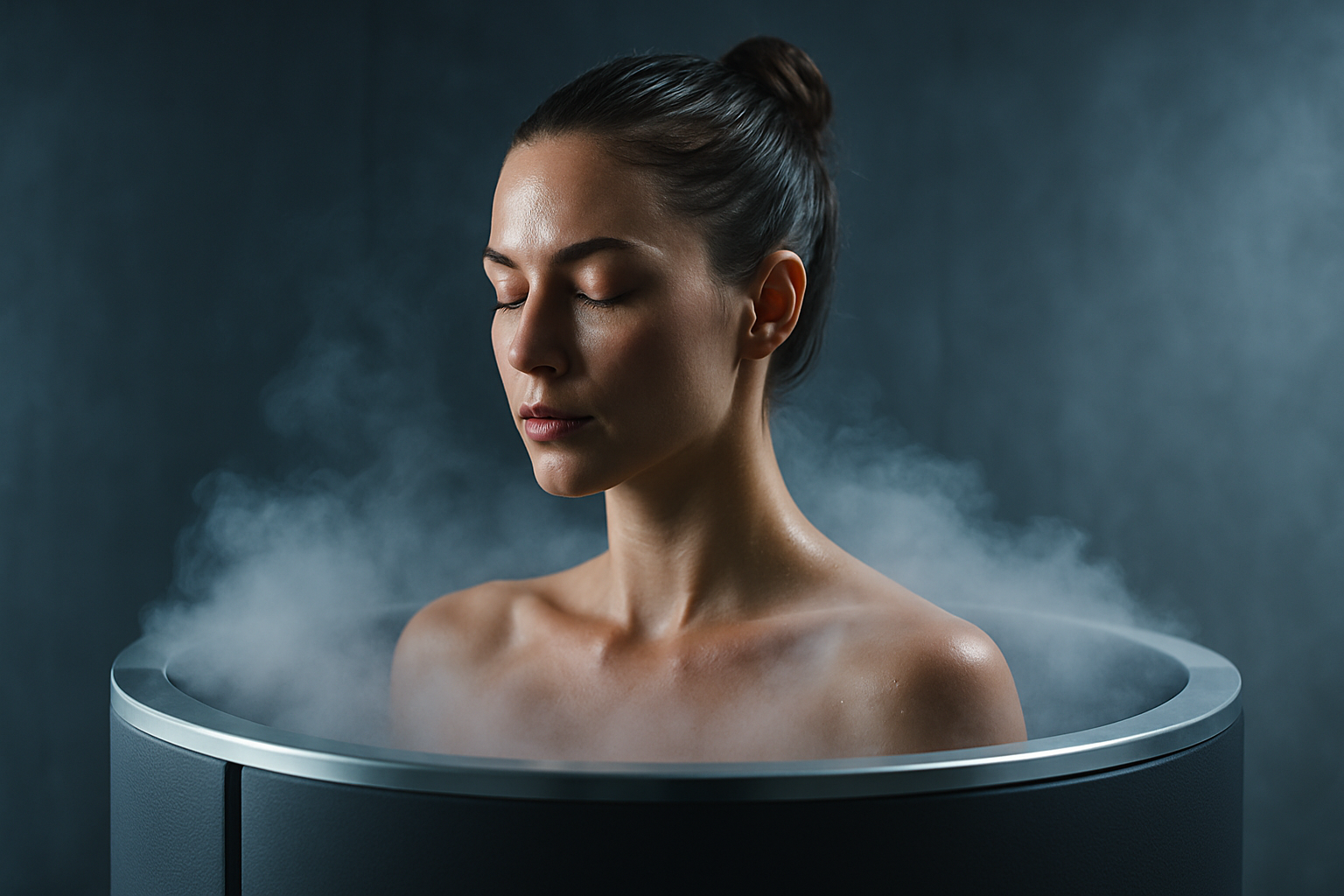Cryotherapy Facials: The Cold Truth About This Beauty Trend
A blast of icy cold air caresses your skin, sending a tingling sensation through your face. As the chill settles in, you can almost feel your pores tightening and your complexion brightening. This is the world of cryotherapy facials, a cutting-edge beauty treatment that's taking the skincare industry by storm. Harnessing the power of extreme cold, this innovative technique promises to rejuvenate skin, reduce inflammation, and even boost collagen production. But what's the science behind these frosty facials, and do they truly deliver on their icy promises? Let's dive into the cold, hard facts about this cool new trend in beauty.

In the 1970s, Japanese rheumatologist Dr. Toshima Yamauchi began using extreme cold to treat rheumatoid arthritis. His work laid the foundation for whole-body cryotherapy, which gained popularity among athletes for its ability to reduce muscle soreness and speed up recovery times. It wasn’t until the late 2000s that the beauty industry began to explore the potential of localized cryotherapy for facial treatments.
The first cryotherapy facials were introduced in high-end spas and dermatology clinics, using liquid nitrogen to rapidly cool the skin. As the technology evolved, more accessible methods were developed, including cryotherapy wands and masks that could be used at home.
The Science of Cold in Skincare
The principle behind cryotherapy facials is simple: extreme cold causes blood vessels to constrict, reducing blood flow to the treated area. When the skin warms up again, blood rushes back to the surface, bringing with it oxygen and nutrients. This process, known as vasoconstriction followed by vasodilation, is believed to have several benefits for the skin.
One of the primary effects of cryotherapy is its ability to reduce inflammation. The cold temperature helps to numb nerve endings and decrease the production of inflammatory mediators, which can lead to a reduction in redness and puffiness. This makes cryotherapy facials particularly appealing for those with sensitive or acne-prone skin.
Another proposed benefit is increased collagen production. Some studies suggest that exposure to cold temperatures can stimulate fibroblasts, the cells responsible for producing collagen and elastin. This could potentially lead to firmer, more youthful-looking skin over time.
Cryotherapy is also thought to improve the penetration of skincare products. The cold temperature causes pores to tighten, which may help to lock in moisture and active ingredients applied after the treatment.
Types of Cryotherapy Facial Treatments
There are several different approaches to cryotherapy facials, ranging from professional treatments to at-home devices:
- Liquid Nitrogen Facials: Performed by trained professionals, these treatments use a controlled spray of liquid nitrogen to rapidly cool the skin. The ultra-low temperature (around -196°C) creates an intense but brief cold exposure.
- Cryotherapy Wands: These handheld devices use thermoelectric cooling to lower skin temperature. They’re often used in spa settings but are also available for home use.
- Cryo Masks: These masks contain gel or metal elements that can be chilled in the freezer. They provide a gentler, more prolonged cold exposure compared to liquid nitrogen treatments.
- Ice Rollers: Simple tools that can be filled with water and frozen, ice rollers offer a budget-friendly way to incorporate cold therapy into a skincare routine.
- Cryogenic Chambers: While primarily used for whole-body treatments, some spas now offer facial-specific cryogenic chambers that expose only the face to sub-zero temperatures.
Benefits and Risks
Proponents of cryotherapy facials claim a wide range of benefits, including:
- Reduced inflammation and redness
- Improved skin tone and texture
- Minimized appearance of pores
- Increased circulation and lymphatic drainage
- Enhanced product absorption
- Potential reduction in fine lines and wrinkles
However, it’s important to note that while anecdotal evidence for these benefits is abundant, scientific research specifically on cryotherapy facials is still limited. Many of the proposed benefits are extrapolated from studies on whole-body cryotherapy or general cold therapy.
As with any skincare treatment, there are also potential risks to consider. These may include:
- Skin irritation or sensitivity
- Temporary redness or swelling
- Risk of frostbite if not performed correctly (particularly with liquid nitrogen treatments)
- Potential exacerbation of certain skin conditions like rosacea
It’s crucial to consult with a dermatologist or skincare professional before trying cryotherapy, especially for those with sensitive skin or underlying health conditions.
The Future of Cryotherapy in Beauty
As the beauty industry continues to innovate, cryotherapy is likely to play an increasingly significant role. Research into the long-term effects of cold therapy on skin health is ongoing, and we may see more targeted applications developed in the coming years.
One area of particular interest is the combination of cryotherapy with other skincare technologies. For example, some practitioners are exploring the use of cryotherapy in conjunction with LED light therapy or microneedling to enhance results.
There’s also growing interest in the potential of cryotherapy for body contouring and cellulite reduction. While these applications are still in their early stages, they highlight the versatility of cold therapy in the beauty and wellness space.
As consumer demand for non-invasive, results-driven treatments continues to grow, cryotherapy facials are likely to become more widely available and accessible. However, as with any emerging beauty trend, it’s important to approach cryotherapy with a critical eye and realistic expectations.
In conclusion, cryotherapy facials represent an exciting intersection of science and beauty. While more research is needed to fully understand their long-term benefits, the immediate effects of reduced inflammation and improved skin tone make them an intriguing option for those looking to cool down their skincare routine. As always, the key to success lies in finding the right balance between innovation and proven skincare practices, and in working with qualified professionals to develop a personalized approach to skin health.





